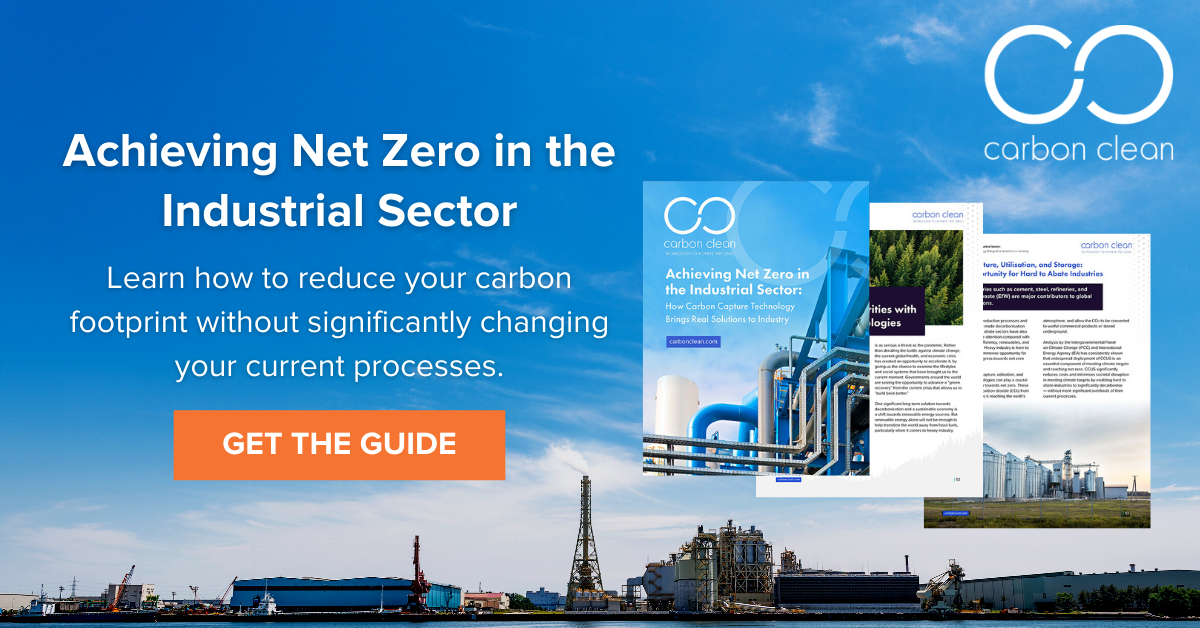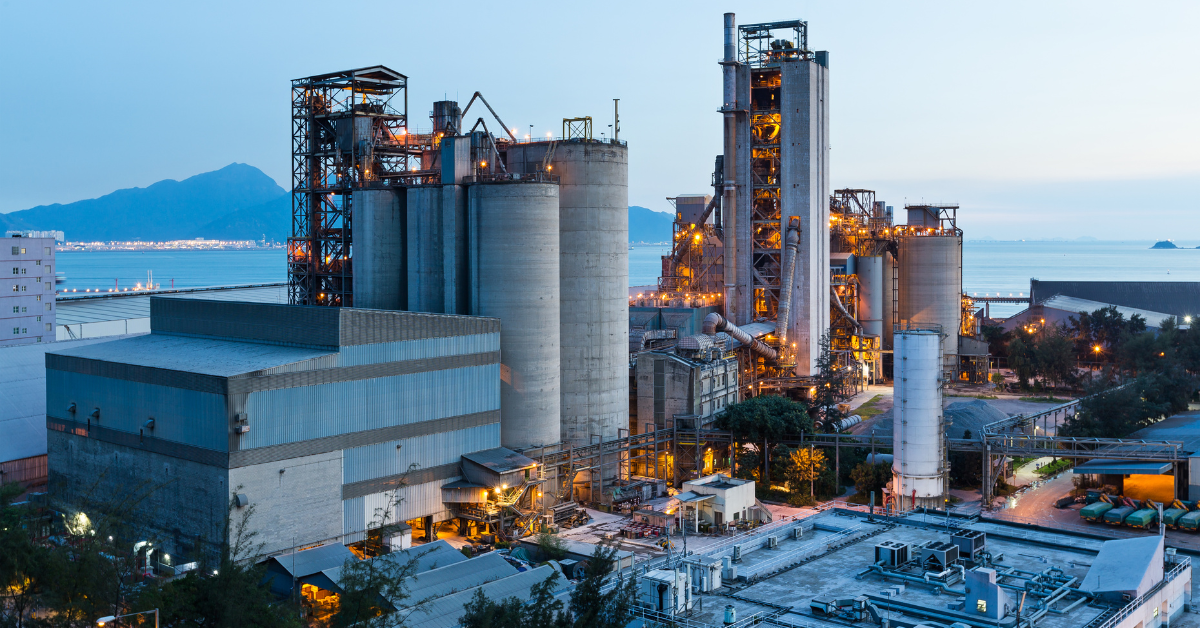The future of the steel industry needs to include a plan that utilises carbon capture technology (CCUS) to reduce fossil fuel carbon emissions and cut the carbon footprint of steel.
Hear from Carbon Clean's Dr James Hall as he discusses how the steel industry can prepare for net zero and reduce its CO2 emissions with CCUS technology in the video below:
How does steel production produce carbon?
Steel and iron production is reliant on coal, both as a feedstock and a fuel. Unlike cement, emissions arise at different points in the steel production process. Steel mills have a number of furnaces and subunits involved in the production process that emit carbon dioxide. The largest of these are the blast furnaces and the on-site power plant.
How much carbon is produced by the steel production process?
Steel production is an energy-intensive process as it requires high temperatures to transform iron ore into steel. The energy and heat from the processes come from fossil fuels, which is primarily coal. The use of fossil fuels means that the average CO2 emissions from steel production is about 1.85 tonnes CO2 per tonne of steel produced.
How much carbon is produced every year by the steel sector?
In fact, between 7-9% of all fossil fuel-based CO2 emissions are derived from the steel industry. The amount of steel produced in 2018 was 1.8 billion tonnes, which equates to about 3.3 billion tonnes of CO2 emissions. If we counted the emissions of the steel industry as if it were a nation, it would rank as the 5th largest in the world.
How does Carbon Clean technology work in a steel plant?
The complexity of the steel production process provides a variety of challenges. The main challenge for steelworks is choosing the most effective site to install capture technology as there are multiple emissions sources on-site. A number of solutions are possible to bring steel to net zero.
How much carbon would be reduced by having Carbon Capture technology in a steel plant?
In the long run, technological changes to the steelmaking process can reduce emissions by producing clean steel. However, this technology is still a way off from being commercialised and will require large modifications to existing steelmaking infrastructure.
How can a steel plant reap the cost benefits of carbon capture?
The best way to decarbonise existing steel plants is to use CCUS on the blast furnace to capture and store or utilise the carbon dioxide. In some cases, this carbon dioxide can be utilised with water and a plant waste known as slag, to produce construction material. Valorisation of captured carbon in this way can provide an additional revenue stream for steelmakers.
Are you interested in learning more about how Carbon Clean is revolutionising carbon capture technology and helping to reduce the carbon footprint of steel? Talk with our experts today!



